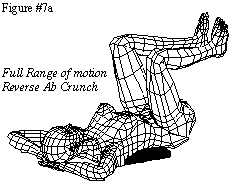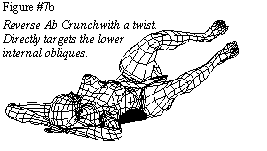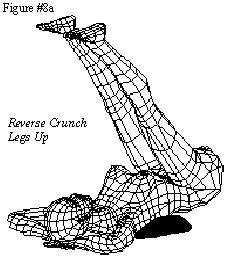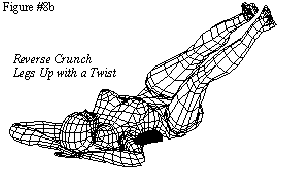 |
 |
||||||||||||
| |
|
|
|
|
|
Women's Abdominal TrainingWomens abdominal training , especially lower abdominal training has virtually stagnated for years. With the introduction of the AbMat™ and the related training techniques discussed in "Sit-ups Redefined" new discoveries have been made specifically related to training the the abdominals of a female. This section will discuss these new breakthroughs. The crunch has even more short-comings for women than for men.
Remember, resistance through a full range of motion is the key to
success with abdominal training. The female upper body tends to
be proportionately lighter than the male's. This makes it easier
for females to cheat in the crunch movment. Add to this the lack
of range of movement in a crunch and you may be getting the idea
how crunches are a dissapointing alternative for effective abdominal
training of females. When doing a crunch, the lower section of the abdominal muscles in a women is never in a full stretched-out positon. This does not permit the proper working of the lower section of the rectus or the lower section of the internal obliques. As stated in the Sit-ups Redefined section, when the pivot point moves to the pelvis - the area of most concern to women - one can instantly feel the working of the lower section of the abdominals. If you look at figures 2 and 3 you can see the exact parts of the sit-up we are talking about. It only takes one set of sit-ups to notice the difference.. Women's Lower Abdominal TrainingWhy is the AbMat™ the best device to finally help women work the lower section of the abdominals? Simple: it's the first device that actually allows for the lower section to work from a fully stretched out or extended position. From the Sit-ups redefined article you have been given the basics of full range motion. Now let's look at it in reference to a female's lower abdominal anatomy. Look at the standard lower abdominal exercises used today: The reverse-crunch ( figures 4, 4a ) or legs up reverse-crunch (figure 5,5a). How can the lower sections of the abdominals (mainly the rectus abdominus and lower internal obliques) be expected to work properly, when just the simple action of placing the back flat on the floor before the exercise is begins eliminates using these muscles correctly. With the AbMat™Keep in mind that muscles work best when they pull in a straight line. Now take a look at the direction of pull of the lower section of the internal obliques. (Drawing 1) The lower section of the Internal obliques can have a girdle type effect on the lower midsection when worked properly with the rectus abdominus, through a full range of motion.
The AbMat™ allows the abdominals to function through a full range of motion. Take a look at figures 7, 7a, 7b, 8, 8a, 8b to see the effect the use of the AbMat™ has on the old movements.
Full Range of motion is essential for all abdominal exercises.
By the Way: How substantial is this extra range of motion gained with the use of the AbMat™? Yes, it's only about 2-4 inches in the lower abdominal area. Take a look at the area on a women's lower stomach that always seems to be that problem area. Yeah, about those 2-4 extra inches worked with the AbMat™. (Drawing 2). |
For more information email us at [email protected] |
 By forcing women into full extension from the start of the movement
(Figure 1) not only is the range of motion more than doubled but
significant resistance is added to the work the abdominal muscles
must do when this occurs.
By forcing women into full extension from the start of the movement
(Figure 1) not only is the range of motion more than doubled but
significant resistance is added to the work the abdominal muscles
must do when this occurs. 





